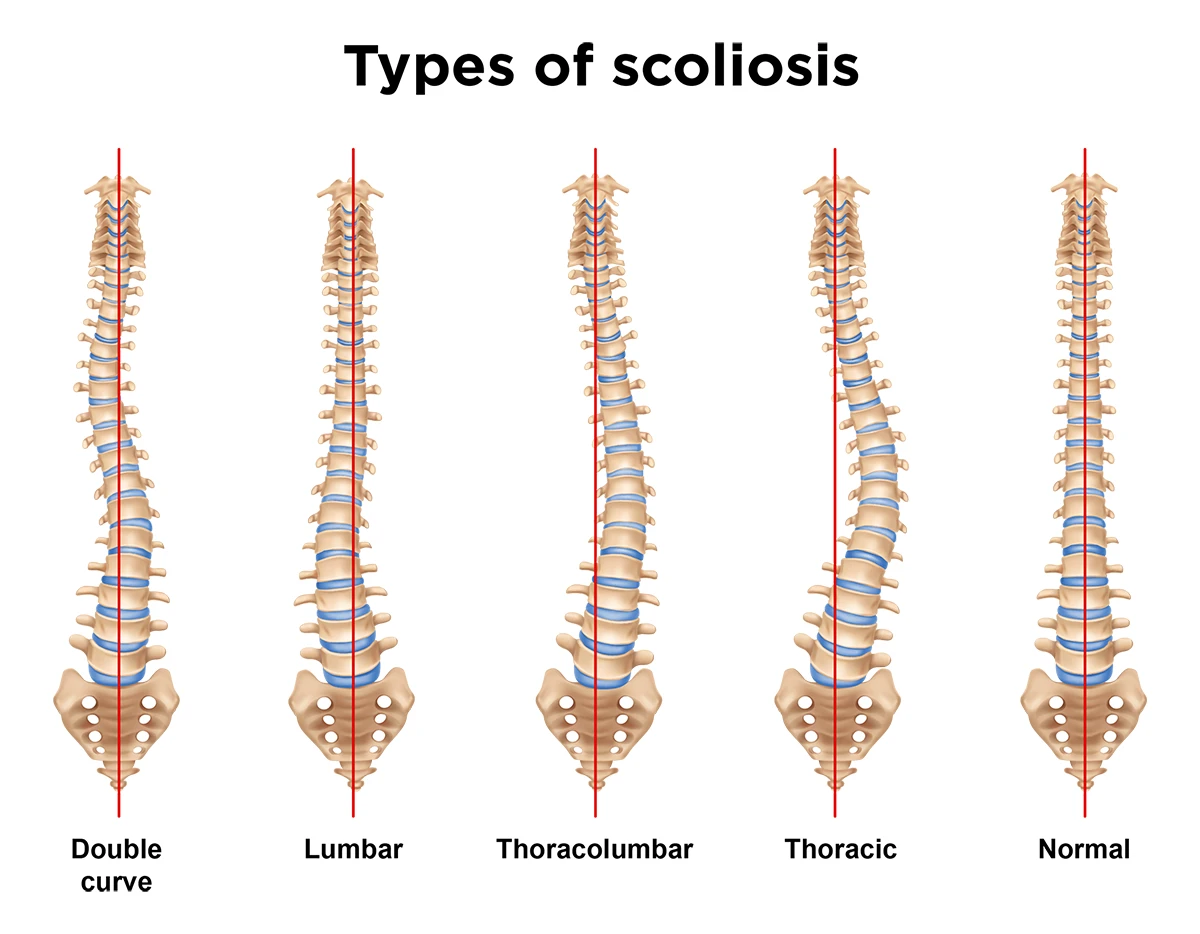Scoliosis
Find a doctorScoliosis usually starts in childhood but can also develop in adults. Mild scoliosis may not require treatment. When it is severe or causes symptoms, spine specialists at Atrium Health Floyd and Harbin Clinic are here for you. We offer personalized treatment plans and caring support.
What is scoliosis?
Scoliosis is an S- or C-shaped sideways curve of your spine. The curves appear most often in late childhood and the early teens, when children are growing fast. Girls are more likely to develop scoliosis than boys.

Scoliosis can be defined by the location of the curve in the spine. The image shows the different categories of scoliosis.
Causes of scoliosis
The cause of scoliosis is usually unknown (idiopathic). Doctors think genetic and environmental factors play a role in the condition. In children, idiopathic scoliosis is classified by age:
- Infantile scoliosis: Age 3 and younger
- Juvenile scoliosis: Ages 4 through 10
- Adolescent scoliosis: Ages 11 through 18
In some cases, scoliosis runs in families, passing from one generation to the next. Other types of scoliosis include:
- Congenital scoliosis caused by conditions present at birth that affect how a baby’s spine or ribs form
- Neuromuscular scoliosis caused by conditions that affect nerves and muscles, including those in and around the spine
- Degenerative scoliosis caused by wear and tear on the spine
Scoliosis symptoms
Many people with scoliosis have no signs or symptoms. When symptoms do occur, they may include:
- Back pain
- Uneven hips or shoulders
- Visible curve in the spine
Scoliosis diagnosis
A physical exam is the first step in diagnosing scoliosis. Your doctor will look at your posture and ask you to bend forward so they can better see your spine. Children are screened for scoliosis using this type of exam as part of their routine wellness visits.
Your doctor may also order X-ray imaging tests of your spine. X-rays are important because the actual curve may be worse than what your doctor can see during a physical exam. You may also need an MRI to evaluate your spine further.
Scoliosis treatment
Treatment depends on many things, including the underlying cause, the severity and location of the curve and your age.
For children who are still growing, doctors often recommend a back brace to prevent further curving. There are many types of braces. Most can be adjusted as your child grows. Your child’s doctor will help choose the one that’s right for your child and show you how to use it. Back braces are typically recommended for children over the age of 10.
Other treatment options for scoliosis in children and adults include:
- Outpatient physical therapy
- Spine surgery
Physical therapy services
Personalized therapy & rehab from experts you trust.
Get the MyAtriumHealth app
Get test results, message your provider & more.